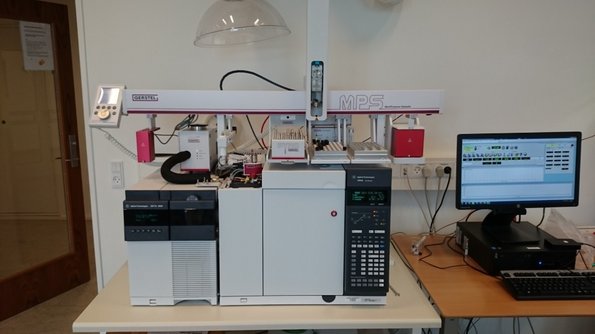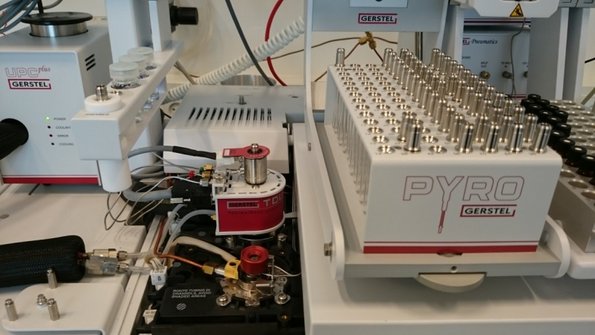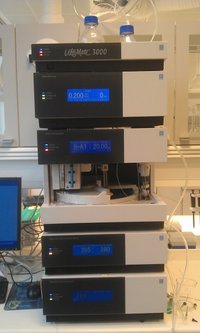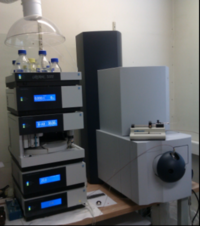GC-MS allows the separation of volatile compounds in complex mixtures and identification of unknowns. Quantitative methods have been set up on the system to analyze bio-oil samples from HTL by liquid injection, derivatized or non-derivatized.
The addition of the Gerstel MPS sampler allows the use of liquid injection autosampling (96 vials) as well as automated Pyrolysis, Thermal Desorption, headspace analysis, evolved gas analysis (EGA), solid phase micro extraction (SPME), and Twister SPME.
Currently, automated pyrolysis is used to develop a method for the investigation of atmospheric microplastic. Thermal desorption is applied in the analysis of marine volatile organic compounds in the Arctic, along with the investigation of environmental effects of a green lignin-based binder in mineral wood.



The High Pressure Liquid chromatograph (HPLC) allows the separation and quantification of components in mixtures. With the use of a PolarSil column, Size Exclusion Chromatography (SEC) has been set up to analyze lignin and its degradation products as well as bio-oils. SEC allows the determination of the molecular weight distribution and averages of samples. The versatile HPLC instrument allows the analysis of a wide range of compounds such as environmental pollutants.

The UHPLC-qTOF-MS system is used to identify and quantify organic compounds in atmospheric aerosols from biogenic and anthropogenic sources. Compounds can be separated by reversed-phase UHPLC in gradient mode and identified by their exact molar mass and characteristic mass fragmentation.
Currently, the UHPLC is used to study plant-plant communication via root exudates, chemical compositions of urban and Arctic aerosols, as well as the chemical composition of Arctic waters.